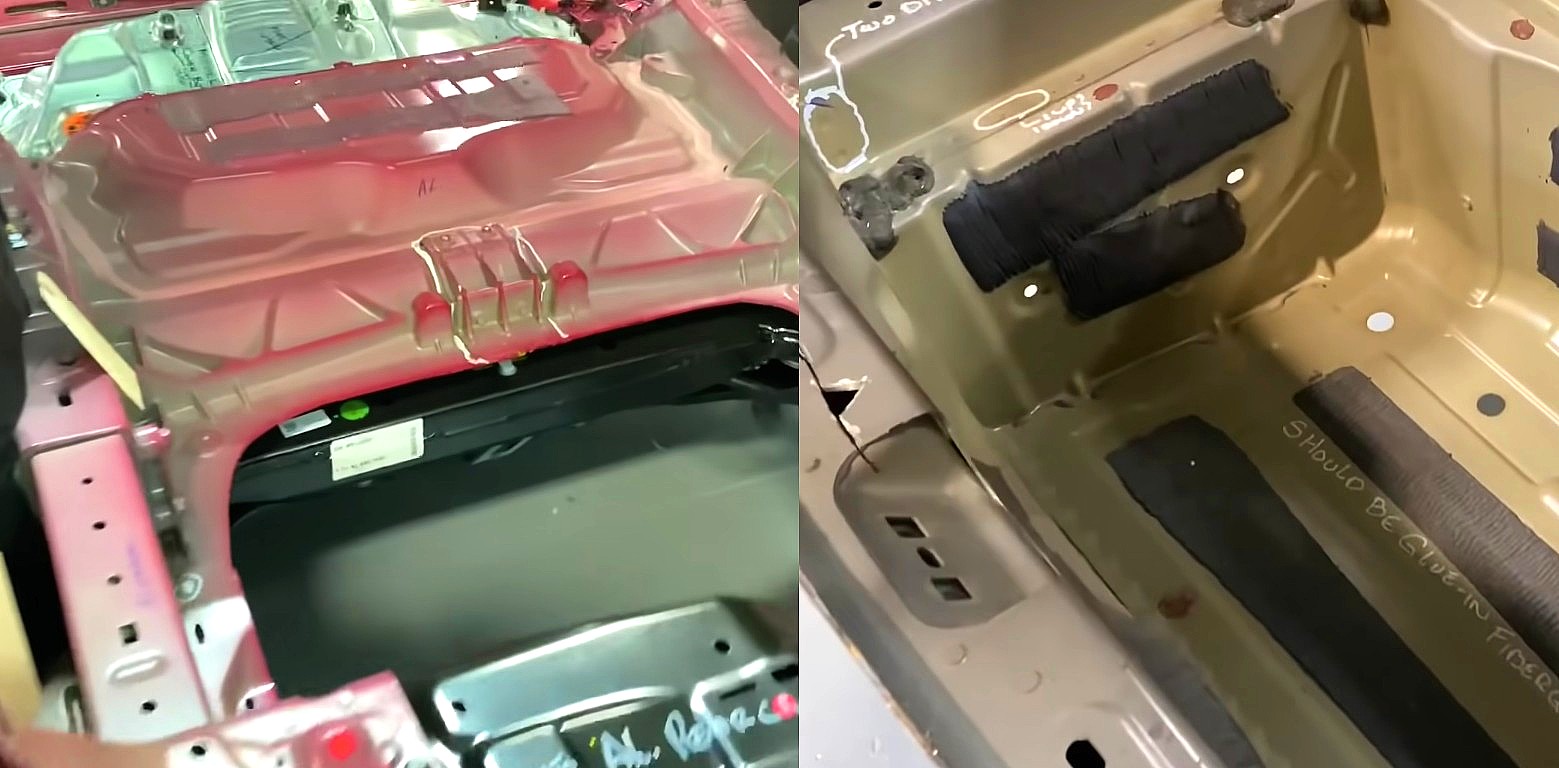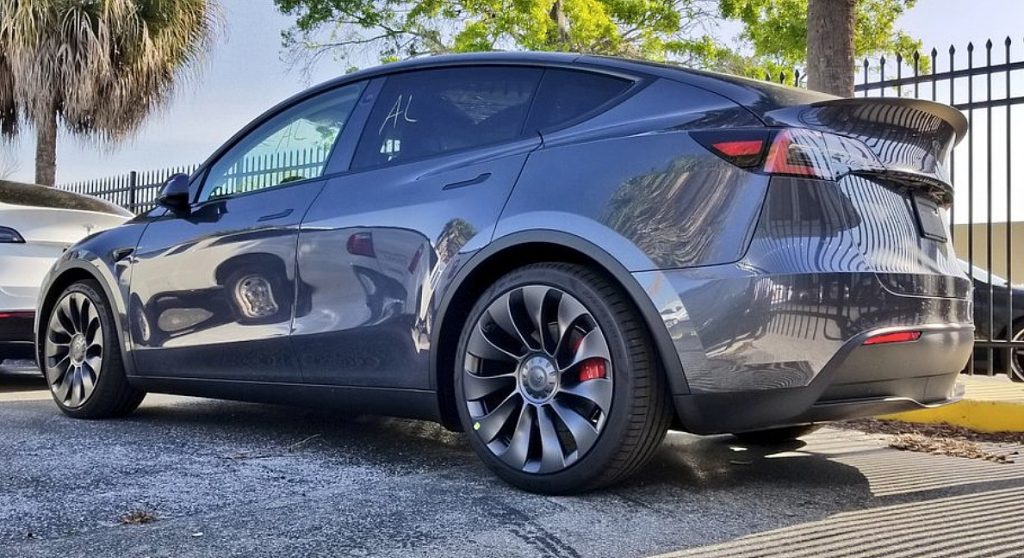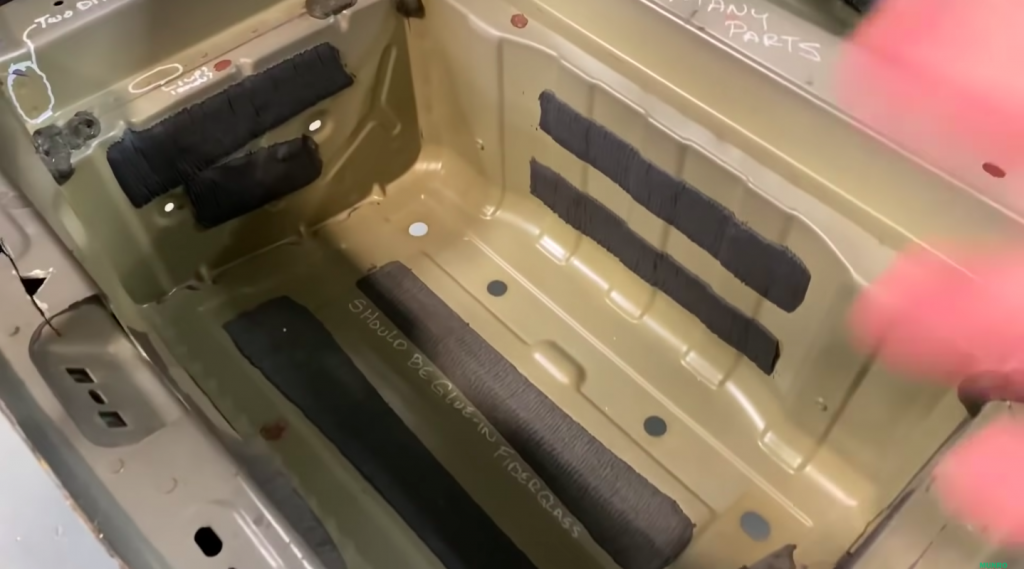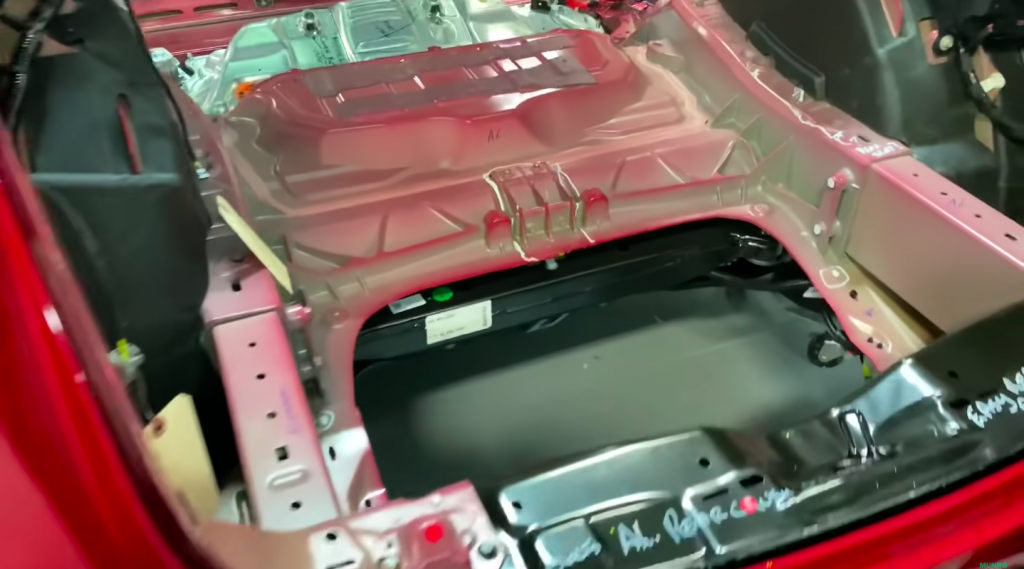

News
Tesla Model Y vs Model 3 casting comparison shows that legacy auto’s ‘soil-your-pants’ moment is at hand
Back in April 2018, automotive teardown expert Sandy Munro mentioned that if Tesla had contracted an experienced automaker to produce the early-production Model 3’s body, the electric car maker would have “wiped the floor with everybody.” This is because from the suspension down, the Model 3 was a stellar piece of engineering, despite its body having several issues.
Its electric motors were compact, powerful, and cost effective; its batteries are the best in the industry, and its driving dynamics give the impression that the vehicle was riding on rails. Munro noted that if Tesla had hit a home run with the Model 3’s “dinosaur technologies” like its welds and casts, even veteran auto giants like Toyota would appropriately be “crapping their pants.”
It has been nearly two years since Munro mentioned those words during an appearance at YouTube’s Autoline After Hours. Tesla has changed a lot since then, and the company has even released its latest vehicle, the Model Y crossover. Sharing 75% of the Model 3’s parts, the Model Y is designed as a mass-market electric vehicle, and one that can be even more disruptive as its sedan sibling.
Munro, for his part, has acquired and started a teardown of the all-electric crossover. And based on his findings thus far, it appears that Tesla’s “dinosaur technologies” have improved vastly since the Model 3. This is most evident in the rear casting utilized on the two vehicles.

One look at the Model Y and Model 3’s rear casts shows that the two vehicles are already worlds apart in terms of build quality and design. Munro noted that he did not like the Model 3’s rear casting at all, since it was also over-engineered, with about 100 parts utilized for its rear trunk.
In a way, the Model 3’s rear casting represented the hubris that Elon Musk has admitted to in the past, as it showed Tesla essentially trying to fix something that is not necessarily broken. The result of this was a lot of challenges for Tesla, and a lot of issues with the early-production Model 3’s rear casting.
The Model Y is an entirely different animal. The all-electric crossover features what could only be described as a giant rear casting that is the complete antithesis of the Model 3’s. It has few parts, its welds are consistent, and it features a trunk tub that is similar to those utilized by the world’s best automakers. It’s pretty much what the Model 3 could have been if Tesla was more experienced when they started building the all-electric sedan.
If the Model 3’s rear casting was an exercise in hubris, the Model Y’s rear cast is an exercise in humility. It showed that Tesla is flexible, and that it’s willing to learn, even if it meant abandoning its initial plans and starting from the ground up. Tesla evidently abandoned the early-production Model 3’s rear casting and trunk design. And it’s all the better for it.

A lot of this could be attributed to Elon Musk himself. Munro has noted in the past that he and the Tesla CEO had talked over the phone during his Model 3 teardown, where Musk explained the reasons behind some of the findings about the all-electric sedan. Munro’s firm later sent Tesla a pro bono list of over 200 suggestions that can improve the Model 3’s body.
These suggestions seem to have come to life in the Model Y. Granted, the teardown process for the all-electric crossover has only just begun. Still, several aspects of the vehicle, most notably its rear casting, shows that Tesla did learn from the Model 3, and it has become a much more mature automaker today. Other suggestions from the teardown expert were also applied to the Model Y’s other components, such as its wiring.
It should be noted that Tesla’s fast evolution is partly due to the company’s Silicon Valley startup roots. Startups are notorious for quick, drastic changes in direction, and workers at these companies are required to be tough and flexible. Tesla embodies this, making the company notoriously challenging to work for compared to conventional car companies like GM or Ford.

Yet despite this, Tesla has ranked consistently among the most attractive firms for engineering students. This is because in Tesla, conventional corporate bureaucracy is replaced with an open communication system that allows even interns to share their ideas with company executives. Some of the issues in the Model 3’s early production lines, for example, were addressed by interns, who were later hired full-time by Tesla.
The Model Y is a crossover, which means that it is competing in one of the fastest-growing segments in the auto industry today. With the Model Y, Tesla has the chance to make its biggest mark in the market yet. Fortunately, the electric car maker appears to have done its homework before it released its newest vehicle. One could even argue that Tesla released the Model Y at the perfect time. A mass-market all-electric vehicle that can disrupt the market of crossover SUVs requires a mature company, after all, and Tesla has only started to fit this bill recently.
Just two years ago, Munro mentioned that if the Model 3 had a properly-built body, veteran automakers like Toyota would be “crapping their pants” because of how outclassed they would be. With how the Model Y is turning out, it appears that legacy auto would be wise to keep some extra pairs of pants for the coming years, just in case.
Watch a deep dive into the Tesla Model 3 and Model Y’s rear casts in the video below.
News
Tesla Robotaxi has already surpassed Waymo in this key metric
Tesla Robotaxi has already overtaken Waymo in Austin in one key metric, but there’s still more work to do.

Tesla Robotaxi has already surpassed Waymo in one extremely important key metric: size of service area.
Tesla just expanded its service area in Austin on Monday morning, pushing the boundaries of its Robotaxi fleet in an interesting fashion with new capabilities to the north. Yes, we know what it looks like:
🚨 Tesla’s new Robotaxi geofence is…
Finish the sentence 🥸 pic.twitter.com/3bjhMqsRm5
— TESLARATI (@Teslarati) July 14, 2025
The expansion doubled Tesla Robotaxi’s potential travel locations, which now include the University of Texas at Austin, a school with over 53,000 students.
The doubling of the service area by Tesla has already made its travel area larger than Waymo’s, which launched driverless rides in October 2024. It became available to the public in March 2025.
According to Grok, the AI agent on X, Tesla Robotaxi’s current service area spans 42 square miles, which is five square miles larger than Waymo’s service area of 37 square miles.
Tesla Robotaxi (red) vs. Waymo geofence in Austin.
Much can be said about the shape… but the Robotaxi area is now ~3.9 mi² (10 km²) larger than Waymo’s!! pic.twitter.com/dVfh2ODxJC
— Robin (@xdNiBoR) July 14, 2025
The service area is one of the most important metrics in determining how much progress a self-driving ride-hailing service is making. Safety is the priority of any company operating a ride-hailing network, especially ones that are making it a point to use autonomy to deploy it.
However, these companies are essentially racing for a larger piece of the city or cities they are in. Waymo has expanded to several different regions around the United States, including Arizona and Los Angeles.
Tesla is attempting to do the same in the coming months as it has already filed paperwork in both California and Arizona to deploy its Robotaxi fleet in states across the U.S.
As the platform continues to show more prowess and accuracy in its operation, Tesla will begin to expand to new areas, eventually aiming for a global rollout of its self-driving service.
News
Tesla Megapacks arrive for massive battery replacing coal plant
Tesla Megapacks have started arriving on-site to the Stanwell Battery Project, just as Queensland prepares to wind down the Stanwell coal plant.

The first of over 300 Tesla Megapacks have arrived to the site of a massive battery energy storage system (BESS) being built in Australia, dubbed the Stanwell Battery Project after a coal plant it’s set to replace.
In a press release last week, the Stanwell Battery Project announced that the first Tesla Megapack 2XL units had arrived to the site, which is located outside of Rockhampton in Queensland, Australia. The project will eventually feature 324 Megapack units, set to arrive in the coming months, in order to support the 300MW/1,200MWh battery project.
“The Stanwell Battery is part of the diversification of our portfolio, to include cleaner and more flexible energy solutions,” said Angie Zahra, Stanwell Central Generation General Manager. “It is just one part of the 800 MW of battery energy storage capacity we have in our pipeline.
“Capable of discharging 300 MW of energy for up to four hours (1,200 MWh), our mega battery will be one of the largest in Queensland.”

Credit: Stanwell
Did you know Tesla’s Lathrop facility churns out a Megapack every 68 minutes? That’s enough energy to power 3,600 homes for an hour per unit! ⚡️ pic.twitter.com/bG6fpHkB9O
— TESLARATI (@Teslarati) June 11, 2025
READ MORE ON TESLA MEGAPACKS: Tesla Lathrop Megafactory celebrates massive Megapack battery milestone
The state is working with government-owned company Yurika to facilitate construction, and the process is expected to create roughly 80 jobs. The project is expected to come fully online in May 2027, with initial commissioning of the Megapacks aiming for November 2025.
The Stanwell Battery is set to replace the nearby Stanwell coal generation plant, which the government is planning to wind down starting in 2026 as part of efforts to reach an 80 percent renewable energy generation ratio by 2035. Meanwhile, the government is also set to begin winding down the Tarong and Callide coal plants, while several other Megapack projects are being built or coming online. o ya
Tesla currently has two Megapack production facilities, located in Lathrop, California, in the U.S. and another that came online earlier this year in Shanghai, China. The Shanghai Megafactory shipped its first units to Australia in March, while both factories are expected to be capable of producing 10,000 Megapack units per year upon reaching volume production.
News
The Tesla Diner is basically finished—here’s what it looks like
The company first broke ground on the Diner, Drive-in, and Supercharger location in September 2023. Now, it has served one of its first internal customers.

Tesla has finally completed the construction of its highly anticipated Diner, Drive-in, and Supercharger in Los Angeles, and recent photos of the interior’s “retro-futuristic” style are making their way around the internet.
X user Brad Goldberg shared photos from the Tesla Diner site last Tuesday, depicting some of the Supercharger stalls, indoor and outdoor seating areas, multiple neon lights, and even an Optimus robot. Goldberg also noted that there had been a “flurry of activity on site” while he was snapping the photos last week, suggesting that the restaurant location could be getting close to opening.
The Tesla Diner also served one of its first internal customers in the past few days, as Elon Musk posted on X on early Monday morning that he had just finished up eating a meal at the site:
I just had dinner at the retro-futuristic Tesla diner and Supercharger.
Team did great work making it one of the coolest spots in LA!
The photos also show that the site is pretty much done, with some of them even showing vehicles charging at the charging stalls.
You can see some of the latest photos of the Tesla Diner below.

Credit: BradGoldbergMD | X

Credit: BradGoldbergMD | X

Credit: BradGoldbergMD | X

Credit: BradGoldbergMD | X

Credit: TeslaKing420 | X

Credit: TeslaKing420 | X

Credit: Brad Goldberg (via Sawyer Merritt on X)

Credit: Brad Goldberg (via Sawyer Merritt on X)

Credit: Brad Goldberg (via Sawyer Merritt on X)

Credit: Brad Goldberg (via Sawyer Merritt on X)

Credit: Brad Goldberg (via Sawyer Merritt on X)
READ MORE ON TESLA’S LA DINER: Tesla readies Drive-In Diner Supercharger for launch with app inclusion
When will the Tesla Diner open to external customers?
While it’s still not open to external customers yet, the news again suggests that the company could be close to an official opening date. Tesla first broke ground on the Diner in September 2023, after receiving a wave of building permit approvals throughout that year. Teslarati also covered much of the construction progress throughout last year, including when crews installed the first and second drive-in screens.
Located at 7001 West Santa Monica Boulevard, the idea was first discussed in 2018 by Musk and a few others on Twitter, featuring 1950s rock and roll, waiters on roller skates, and drive-in movie theater screens playing clips from some of history’s best movies. Notably, the photos of the front doors also show that the site will be open 24 hours a day, 7 days a week, whenever it does end up opening.
Tesla’s progress on Supercharger with diner, drive-in seen in aerial footage
-

 Elon Musk2 weeks ago
Elon Musk2 weeks agoTesla investors will be shocked by Jim Cramer’s latest assessment
-

 News2 days ago
News2 days agoTesla debuts hands-free Grok AI with update 2025.26: What you need to know
-

 Elon Musk4 days ago
Elon Musk4 days agoxAI launches Grok 4 with new $300/month SuperGrok Heavy subscription
-

 Elon Musk6 days ago
Elon Musk6 days agoElon Musk confirms Grok 4 launch on July 9 with livestream event
-

 News1 week ago
News1 week agoTesla Model 3 ranks as the safest new car in Europe for 2025, per Euro NCAP tests
-

 Elon Musk2 weeks ago
Elon Musk2 weeks agoxAI’s Memphis data center receives air permit despite community criticism
-

 News4 days ago
News4 days agoTesla begins Robotaxi certification push in Arizona: report
-

 Elon Musk2 weeks ago
Elon Musk2 weeks agoTesla scrambles after Musk sidekick exit, CEO takes over sales














